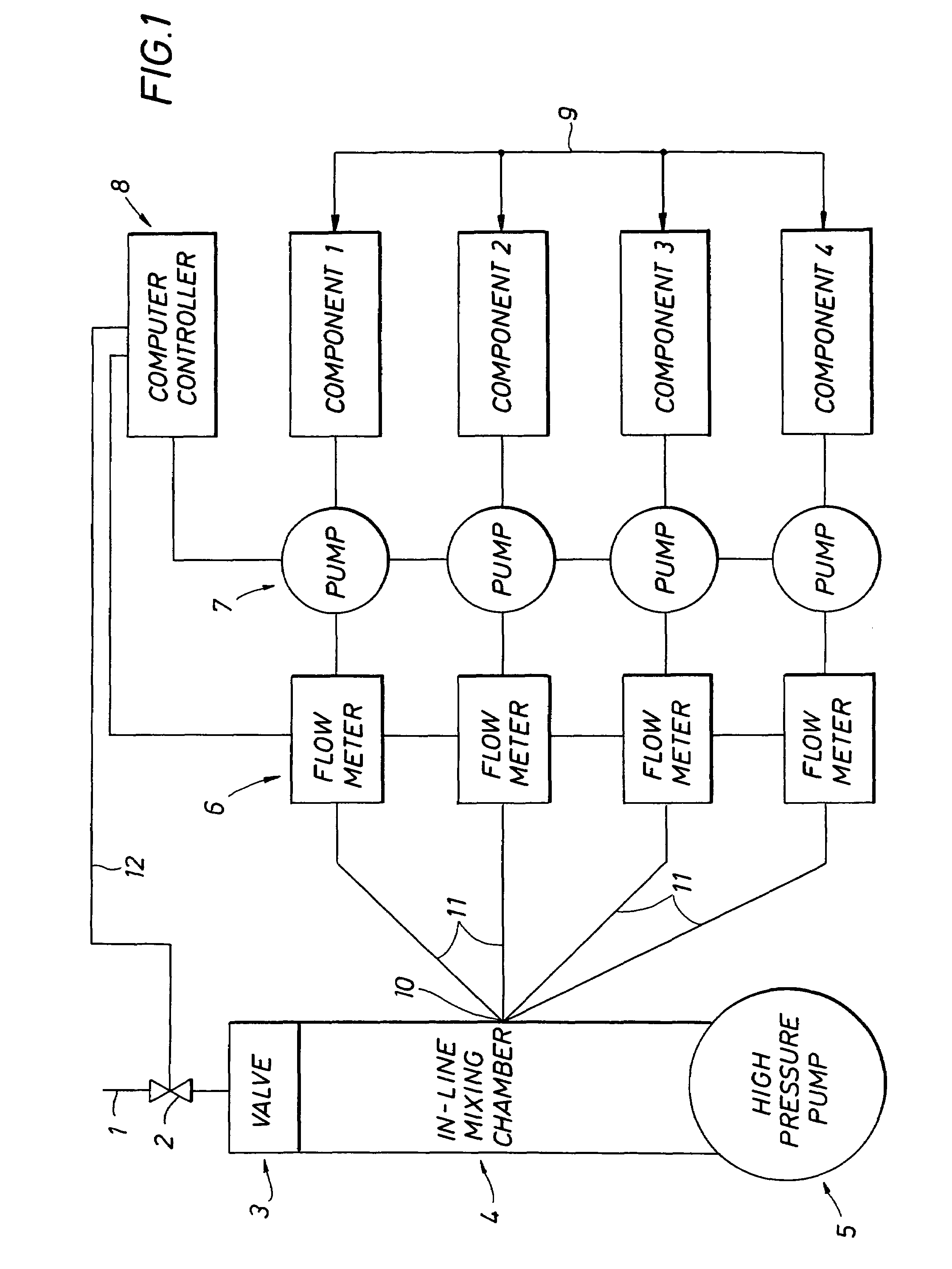Geosynthetic composite for borehole strengthening
a composite and composite material technology, applied in the direction of sealing/packing, well accessories, chemistry apparatus and processes, etc., can solve the problems of reducing the strength formation to fracture, affecting the drilling effect, and the fluid pressure gradient in the borehole required to contain the formation pore pressure during drilling may exceed the fracture pressur
- Summary
- Abstract
- Description
- Claims
- Application Information
AI Technical Summary
Problems solved by technology
Method used
Image
Examples
examples 1-17
[0055]Examples 1 through 17 demonstrate the preparation of various formulations and include the generic description and percent weight of each component. Veova™ is the tradename for C9 to C11, versatic acids available from Resolution Performance Products. Kraton® is the tradename for saturated thermoplastic elastomers available commercially from Kraton® Polymer. Resimene® is the tradename for melamine-formaldehyde resins, which can be obtained commercially from Solutia, Inc. CYMEL® is the tradename for melamine-formaldehyde resins commercially available from Cytec Industries. These compositions are each useful in some embodiments of the present invention and represent a range of different resulting properties of the cured materials.
[0056]
Amount%ComponentDescription / FunctionweightEXAMPLE 1Veova -10 MonomerVinyl Ester of Neodecanoic Acid65TrimethylolpropaneTri-functional acrylate15trimethacrylatemonomer / crosslinkerEthylene glycolMutual solvent7.5monobutyl etherKraton D-1122XUnsaturate...
example 8
[0057]Example 8 demonstrates the use in the field of a resin mixture containing at least one reactive component selected from a blend of at least one reactive ester having at least one carbon-carbon double bond, at least one unsaturated thermoplastic elastomer containing at least one carbon-carbon double bond soluble in the reactive ester; and at least one di- or tri-functional acrylate or methacrylate monomer soluble in non-aqueous drilling fluids and invert emulsion drilling fluids containing C7 to C20 olefins, esters, paraffinic oils and blends thereof, and also soluble in diesel and mineral oils and blends thereof with C7 to C20 olefins, esters, and paraffinic oils; and optionally containing other additives selected from one or more of coupling agents, suspending agents, dyes, weighting agents, lost circulation materials, and other additives known in the art, or any combination thereof, and further optionally containing a saturated thermoplastic elastomer.
[0058]A resin mixture w...
PUM
| Property | Measurement | Unit |
|---|---|---|
| temperature | aaaaa | aaaaa |
| density | aaaaa | aaaaa |
| depth | aaaaa | aaaaa |
Abstract
Description
Claims
Application Information
 Login to View More
Login to View More - R&D
- Intellectual Property
- Life Sciences
- Materials
- Tech Scout
- Unparalleled Data Quality
- Higher Quality Content
- 60% Fewer Hallucinations
Browse by: Latest US Patents, China's latest patents, Technical Efficacy Thesaurus, Application Domain, Technology Topic, Popular Technical Reports.
© 2025 PatSnap. All rights reserved.Legal|Privacy policy|Modern Slavery Act Transparency Statement|Sitemap|About US| Contact US: help@patsnap.com


